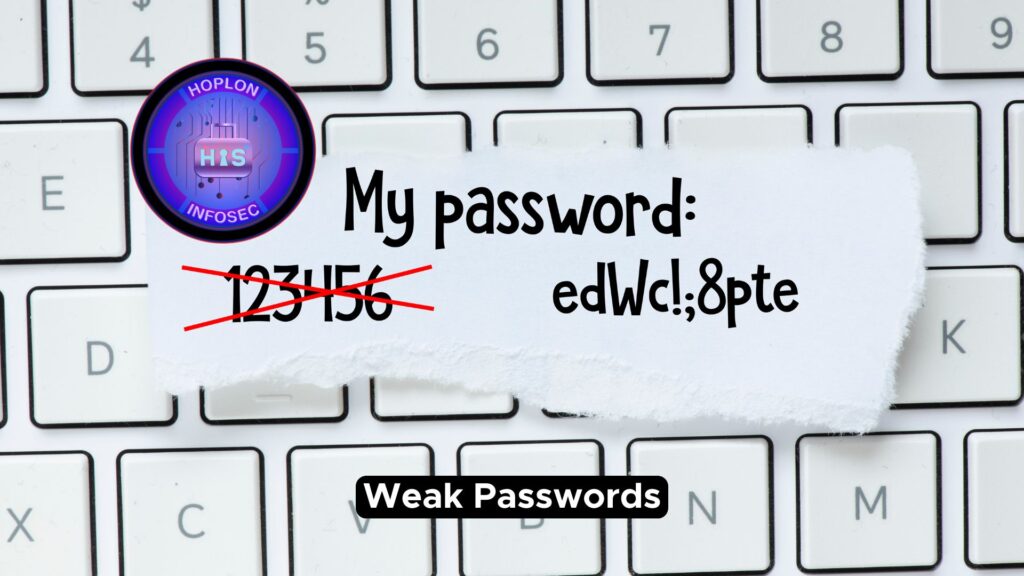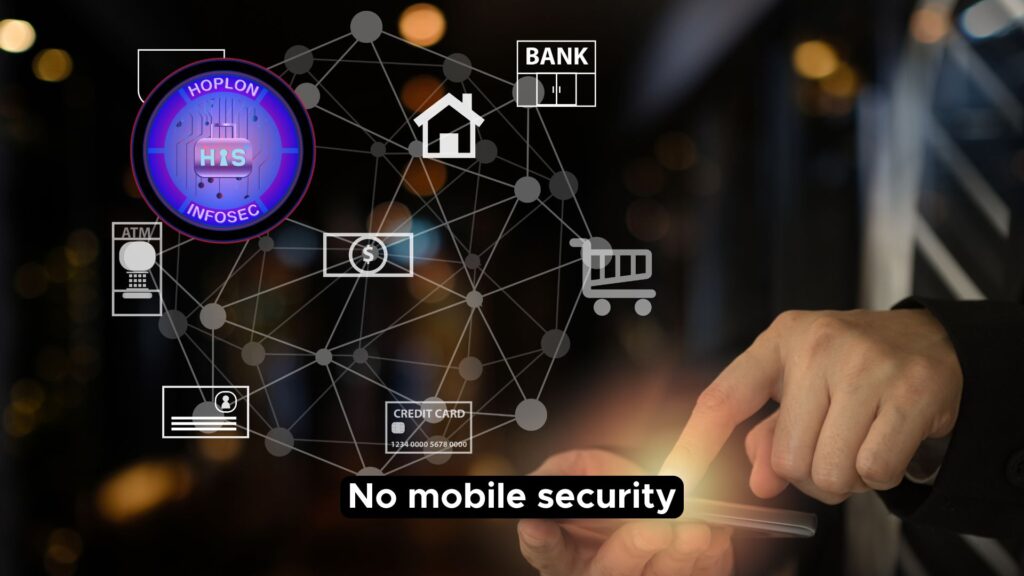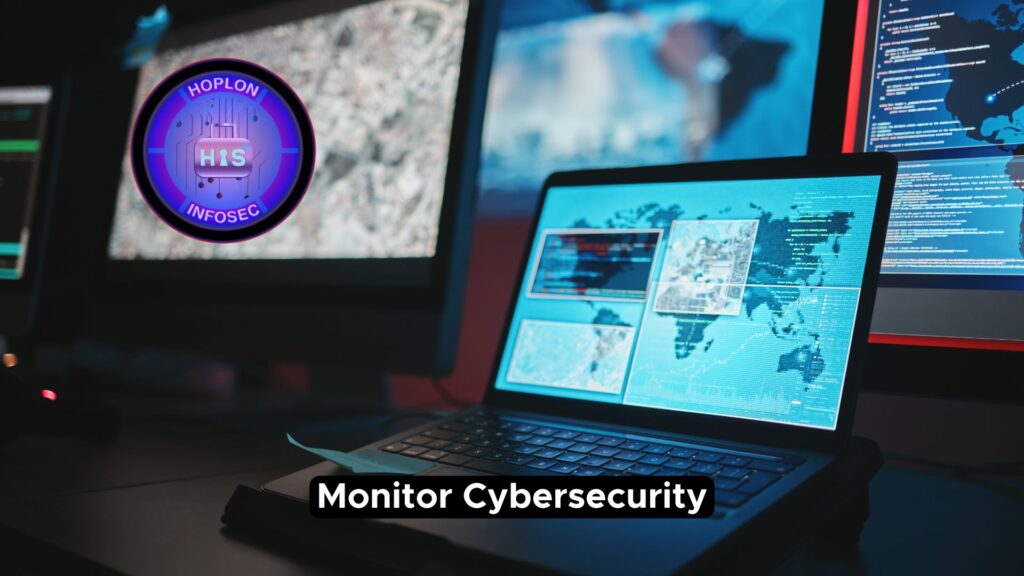10 Major Cybersecurity Mistakes that Businesses Do

Hoplon InfoSec
22 Oct, 2024
In today’s fast-paced digital world, cybersecurity has become a top priority for companies of all kinds. With the growing complexity of cyberattacks, even a single vulnerability may have disastrous effects, resulting in data breaches, financial losses, and reputational harm. Nonetheless, many organizations ignore basic cybersecurity standards, leaving them vulnerable to unnecessary threats.
A prevalent misconception is that small businesses aren’t targets for hackers. This misunderstanding frequently results in a false sense of security, leading firms to overlook critical safeguards. However, assailants usually target smaller businesses since their defenses are weaker, making them easy victims. Businesses make a variety of cybersecurity blunders, including weak passwords, obsolete software, and insufficient staff training. These basic but important flaws allow attackers to enter systems and compromise vital information, making the repercussions substantially worse than expected.
Many firms must also constantly update their cybersecurity policies, exposing their defenses to new and emerging attacks. In the continually changing cybercrime scene, more than what worked yesterday may be required to guard against today’s sophisticated attacks.
In this article, we’ll examine organizations’ most frequent cybersecurity mistakes and offer real solutions to help you improve your security posture. By detecting these flaws and adopting early measures, you can protect your company from possible attacks and reduce the likelihood of costly breaches.
Here are 10 common cybersecurity mistakes that businesses make, and let’s discuss how to avoid them
Weak Passwords

Weak passwords are simple to guess, crack, or disclose using standard hacking techniques such as brute-force assaults. They usually contain short, essential, or often-used words such as “123456” or “password.” Many weak passwords lack complexity, failing to include upper and lower case letters, numerals, and symbols, leaving them accessible to hackers who use automated programs to get into accounts.
When a business uses weak passwords, it exposes itself to various security risks. Unauthorized access to sensitive systems regularly allows hackers to steal or modify crucial corporate data, which can contain customer information, financial data, or intellectual property and could result in severe economic or reputational harm.
Ransomware attacks are another potential concern. Hackers who break weak passwords can access systems and lock them down, demanding a ransom to be released. If a firm cannot retrieve its data, it may experience extended downtime and considerable financial losses. Even if a ransom is paid, there is no assurance that the data will be released or that the firm will not be attacked again.
Weak passwords may allow for phishing attempts. Once attackers have gained access to internal accounts, they can impersonate employees and deceive others into disclosing additional sensitive information, broadening the breadth of the breach. This can lead to compromised email systems, payroll access, and potentially vital infrastructure systems within the organization. Password vulnerabilities also cause regulatory compliance concerns.
Businesses are frequently obliged by data protection legislation to have proper security standards, including a firm password policy. Failure to enforce vital password requirements can result in noncompliance with legislation such as GDPR or HIPAA, perhaps leading to penalties or legal action if a breach happens.
Applying weak passwords exposes enterprises to tremendous danger, with both immediate and long-term effects. To counter these dangers, businesses must employ password best practices such as complicated passwords, multi-factor authentication, and frequent password policy revisions.
No Trained Employees

No-trained employees refer to a company’s inability to sufficiently teach its employees cybersecurity awareness and standards. Employees who are not properly trained become vulnerable points in the company’s defense since they may mistakenly click on phishing emails, use weak passwords, or mishandle critical data.
Businesses confront several hazards when their staff need more training. Phishing assaults grow increasingly effective because inexperienced employees may not spot phony emails or websites. As a result, they may unknowingly provide hackers access to internal networks, resulting in data breaches or illegal access to critical information.
Also, inexperienced staff may need to follow adequate data management practices, raising the likelihood of accidental breaches or exposure. Employees, for example, may submit private material across insecure channels without clear instructions on finding safe websites or encrypted communications. This would expose the organization to cyberattacks or regulatory infractions. Human mistakes are a crucial factor in many breaches.
Employees who need cybersecurity education are more likely to neglect or turn off essential security measures such as multi-factor authentication (MFA), making it more straightforward for attackers to hack into accounts. If a hacker steals one Employee’s credentials, it might trigger a chain reaction that grants access to additional critical systems.
No mobile security

No Mobile Security refers to a company’s failure to protect mobile devices linked to its network, such as smartphones and tablets. Businesses face significant risks if mobile security is not implemented, as mobile devices are frequently used to access sensitive data, emails, and business apps.
When mobile devices are not safeguarded, they become easy targets for hackers, who can exploit weaknesses via malware, phishing, or insecure Wi-Fi networks. This can result in unauthorized access to crucial corporate information or personal data saved on or accessed through the device. A big issue is the increasing likelihood of data breaches.
Employees frequently utilize mobile devices for work-related duties outside of the office, and without sufficient protection, these devices might be hacked. Attackers can use stolen data to gain access to corporate systems, resulting in data loss, financial harm, or even legal ramifications if consumer information is disclosed.
Furthermore, lost or stolen mobile devices pose considerable hazards if no security measures exist. If the device lacks encryption or remote wiping capabilities, a thief might quickly gain access to the company’s sensitive information, putting the entire operation in danger.
No software and system updates

No Software and System Updates refers to a business’s failure to regularly update its software and systems with the latest patches and security enhancements. These updates are critical for fixing known vulnerabilities and improving overall performance. When a business neglects software updates, it exposes itself to security risks. Hackers often exploit known vulnerabilities in outdated software to gain unauthorized access to systems, leading to data breaches or malware infections. These vulnerabilities are usually patched in updates, but businesses remain easy targets without them.
Moreover, outdated systems can lead to compatibility issues. Newer applications or security tools may not function properly on older software, causing inefficiencies and potential downtime. This can disrupt business operations and reduce productivity, especially when critical systems are involved.
Failure to update might also result in regulatory noncompliance. Many companies have cybersecurity rules that necessitate regular system upgrades. Ignoring these updates can lead to noncompliance, which may result in penalties or legal action if a breach occurs. Finally, failing to upgrade software and systems exposes firms to needless risks, including security vulnerabilities and operational inefficiencies. To avoid these difficulties, firms should create a strong update management plan that ensures all systems are patched and kept safe.
Failing to Monitor Cybersecurity Continuously

Failing to Monitor Cybersecurity Continuously refers to a business’s need for real-time oversight over its digital infrastructure to detect and respond to threats. Continuous monitoring is essential to identifying vulnerabilities, suspicious activity, or breaches as they occur. Without ongoing monitoring, businesses face delayed responses to attacks, allowing threats like malware or unauthorized access to spread undetected. This can result in more significant data loss, financial harm, and reputational damage, as cyberattacks may go unnoticed until the damage is severe.
Additionally, businesses need more visibility into emerging threats and evolving attack patterns with monitoring. This makes it harder to defend against newer, more sophisticated attacks proactively. Monitoring tools can alert companies to unusual activity, enabling swift action to minimize harm. The absence of monitoring also makes incident response more reactive than proactive. With early detection, businesses may be able to contain a breach, leading to extended recovery times, costly system downtimes, and higher remediation costs.
No implementation of access control

No Implementation of Access Control refers to the absence of security measures that limit who can view, modify, or access certain systems and data within a business. Without access control, sensitive data can be accessed by anyone in the organization, including unauthorized individuals. This lack of control leaves the business vulnerable to external cyberattacks and internal breaches. For example, employees without proper clearance might inadvertently access and mishandle critical data, increasing the risk of data leaks or loss.
The absence of access control also heightens the risk of insider threats. Employees with unnecessary access can misuse sensitive information, whether intentionally or accidentally. This can lead to data breaches, intellectual property theft, or financial loss. Additionally, regulatory compliance issues arise when access control policies are not enforced. Many cybersecurity standards require businesses to implement role-based access controls (RBAC) to protect sensitive data. Failure to comply can result in fines or penalties, especially in industries like healthcare or finance.
Failing to backup data

Failing to backup data means neglecting to create copies of essential business information to restore in case of data loss. Without regular backups, businesses are highly vulnerable to data breaches, ransomware attacks, or hardware failures, which could permanently lose critical information. When companies fail to back up data, they risk significant financial losses due to downtime and the potential need to recreate lost information. This can also damage their reputation, especially if customer or sensitive data is lost.
Data recovery without backups is often costly, time-consuming, and sometimes impossible. Regular backups are crucial for business continuity and minimizing the impact of potential data loss events.
Not Using Tow-Factor Authentication

Not Using 2-Factor Authentication refers to the failure of a business to implement an additional layer of security beyond just a password. 2FA requires users to provide a second form of identification, such as a one-time code sent to their mobile device, before accessing an account. Without 2FA, businesses are significantly more vulnerable to cyberattacks. Hackers can gain immediate access to accounts if they steal or crack passwords. This can lead to data breaches, compromised systems, and financial losses.
Furthermore, attackers can use stolen credentials in phishing or brute-force attacks, exploiting the lack of an additional security checkpoint. This makes it easier for them to infiltrate systems and steal sensitive information, leading to costly breaches or identity theft. Not implementing 2FA also raises compliance risks. In industries with strict data protection regulations, failure to use robust security measures like 2FA can result in fines or penalties, mainly if a breach occurs. In conclusion, businesses that fail to adopt 2FA face increased risks of unauthorized access, data theft, and regulatory penalties. Implementing 2FA is a simple yet effective way to enhance account security and protect against these threats.
Not Taking Cybersecurity Seriously

They are not Taking Cybersecurity Seriously, which refers to a business’s failure to prioritize or invest in necessary cybersecurity measures. This oversight often stems from underestimating the risks or assuming cybercriminals won’t target them. When companies neglect cybersecurity, they become prime targets for hackers. This leads to vulnerabilities such as weak passwords, unpatched systems, and phishing attacks, resulting in data breaches, financial loss, and operational disruption.
Furthermore, a lack of proper cybersecurity can damage customer trust significantly if sensitive information is compromised. They are rebuilding a reputation after a breach is difficult and costly. Failure to prioritize cybersecurity can also lead to noncompliance with industry regulations, leading to fines or legal consequences. Compliance standards like GDPR or HIPAA require strong security measures to protect data. In conclusion, businesses that don’t take cybersecurity seriously face increased risks, financial setbacks, and long-term damage to their reputation. A proactive approach to cybersecurity is essential for safeguarding assets and ensuring continued success.
Assuming It Will Not Happen to You
Assuming It Will Not Happen to You refers to a business’s mindset that cyberattacks are unlikely to target them, often due to their size, industry, or location. This false sense of security can lead to inadequate protection measures, exposing the company to a wide range of cybersecurity threats. When businesses make this assumption, they are more likely to overlook critical cybersecurity practices, such as updating systems, Employee training, and securing networks. This complacency often makes them easier targets for hackers, who exploit these weaknesses to steal sensitive data or disrupt operations.
Cyberattacks are indiscriminate, and small or medium-sized businesses are often targeted due to their perceived weaker defenses. Hackers may use tactics like phishing, ransomware, or exploiting software vulnerabilities to breach these companies. Without proper defenses, businesses can permanently experience significant financial loss, data breaches, or damage to their reputation. Furthermore, assuming a cyberattack won’t happen may lead to inadequate incident response planning.
In the event of an attack, the business might need to prepare to contain the damage, prolonging downtime and making recovery more difficult and expensive. Ultimately, businesses that do not take the threat of cyberattacks seriously are at greater risk of severe consequences. Companies of all sizes must adopt a proactive cybersecurity approach, understanding that no one is immune to potential threats.
Conclusion
In conclusion, addressing cybersecurity is critical for protecting your company from attacks. Organizations may significantly minimize their cyberattack exposure by avoiding common errors and employing robust security solutions. Continuous monitoring and proactive evaluations are critical to staying ahead of developing dangers. NetworkFort provides a complete approach to network security, assisting organizations in identifying and mitigating threats. Don’t keep your precious information systems safe; contact NetworkFort immediately to guarantee your firm is ready to handle the demands of the digital world.
For details:
https://ccoe.dsci.in/blog/10-common-cybersecurity-mistakes-employees-make-and-how-training-can-help
https://cloudbytegroup.com/10-biggest-cybersecurity-mistakes-of-small-companie\
Share this :